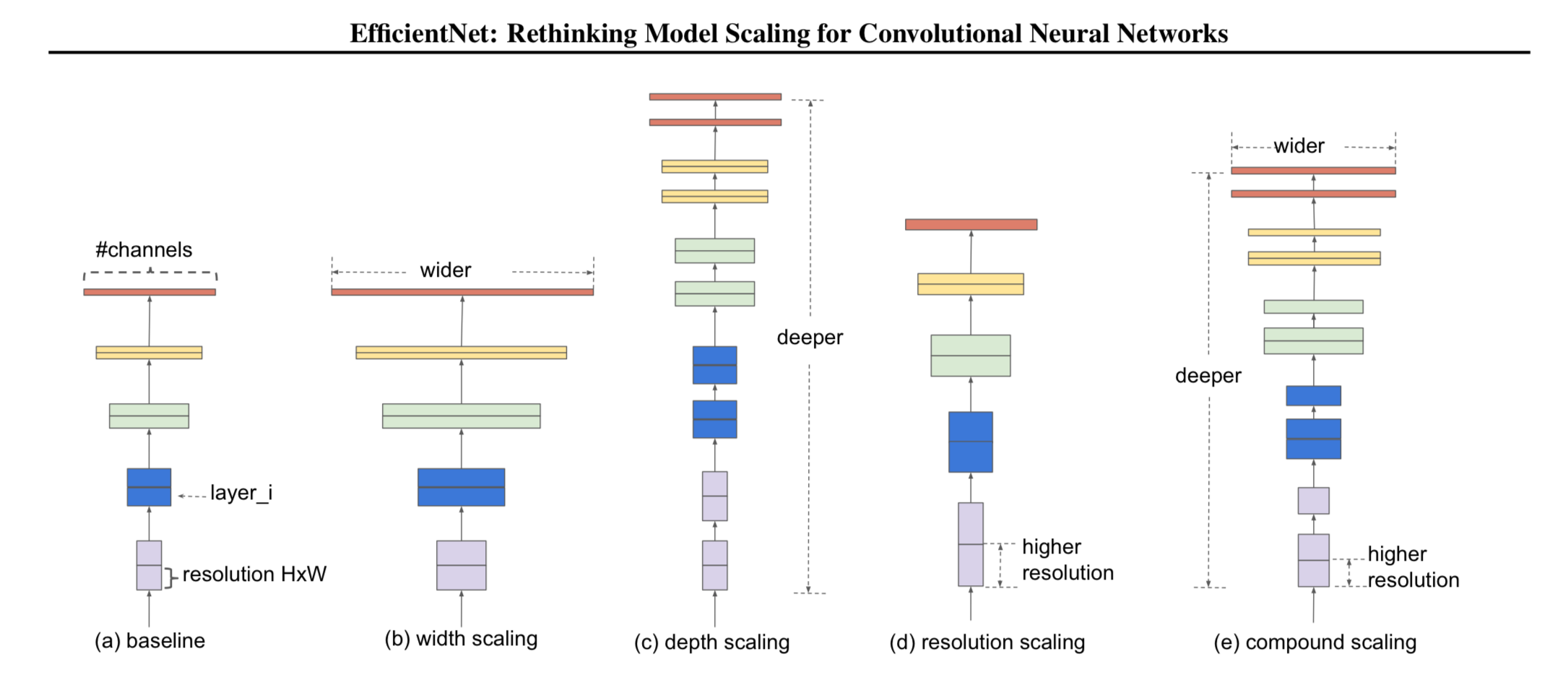Paper Review 7: EfficientNet: Rethinking Model Scaling for Convolutional Neural Networks
1. Summary
This paper propose compound coefficient which uniformly scales all dimensions of depth/width/resolution for better performance

ɑ, β, 𝛾 are constants determined by a small grid search
\[depth: d = ɑ^ϕ\\ width:w=β^ϕ\\ resolution:r=𝛾^ϕ\] \[ɑ·β·𝛾≈2\\ ɑ≥1, β≥1, 𝛾≥1\]Compund scaling method
- STEP 1 : fix ϕ = 1, perform small grid search of ɑ, β, 𝛾.
- STEP 2 : fix ɑ, β, 𝛾 then scale up network with different ϕ
2. Problem Formulation
2-1. Define ConvNet (N)
\[N = \bigodot_{i=1...s}F_i^{L_i}(X_{<H_i\ ,\ W_i\ ,\ C_i>})\]- F_i^{L_i} denotes layer F_i repeated L_i times in stage i.
-
FYI) N is represented by a list of composed layers
\[N=F_k⊙...\ ⊙F_2⊙F_1(X_1) = \bigodot_{i=1...k}F_j(X_1)\]
2-2. Formulate Optimization Problem
\[\max_{d,w,r} \ Accuracy(N(d, w, r))\]When
\[N(d,w,r)=\bigodot_{i=1..s}\hat{F}^{d·\hat{L}_i}(X_{r·\hat{H}_i\ ,\ r·\hat{W}_i \ ,\ w·\hat{C}_i})\\ Memory(N) ≤ target\_memory\\ FLOPS(N) ≤ target\_flops\]3. Observations and Intuitions
- Scaling up any dimension of network width, depth, or resolution improves accuracy but accuracy gain diminishes for bigger models
- Different scaling dimensions are not independent
→ it is critical to balance all dimensions of network width, depth and resolution
- EX) Higher resolution
- → should increase depth to capture more features
- → should increase width to capture more patterns
- EX) Higher resolution